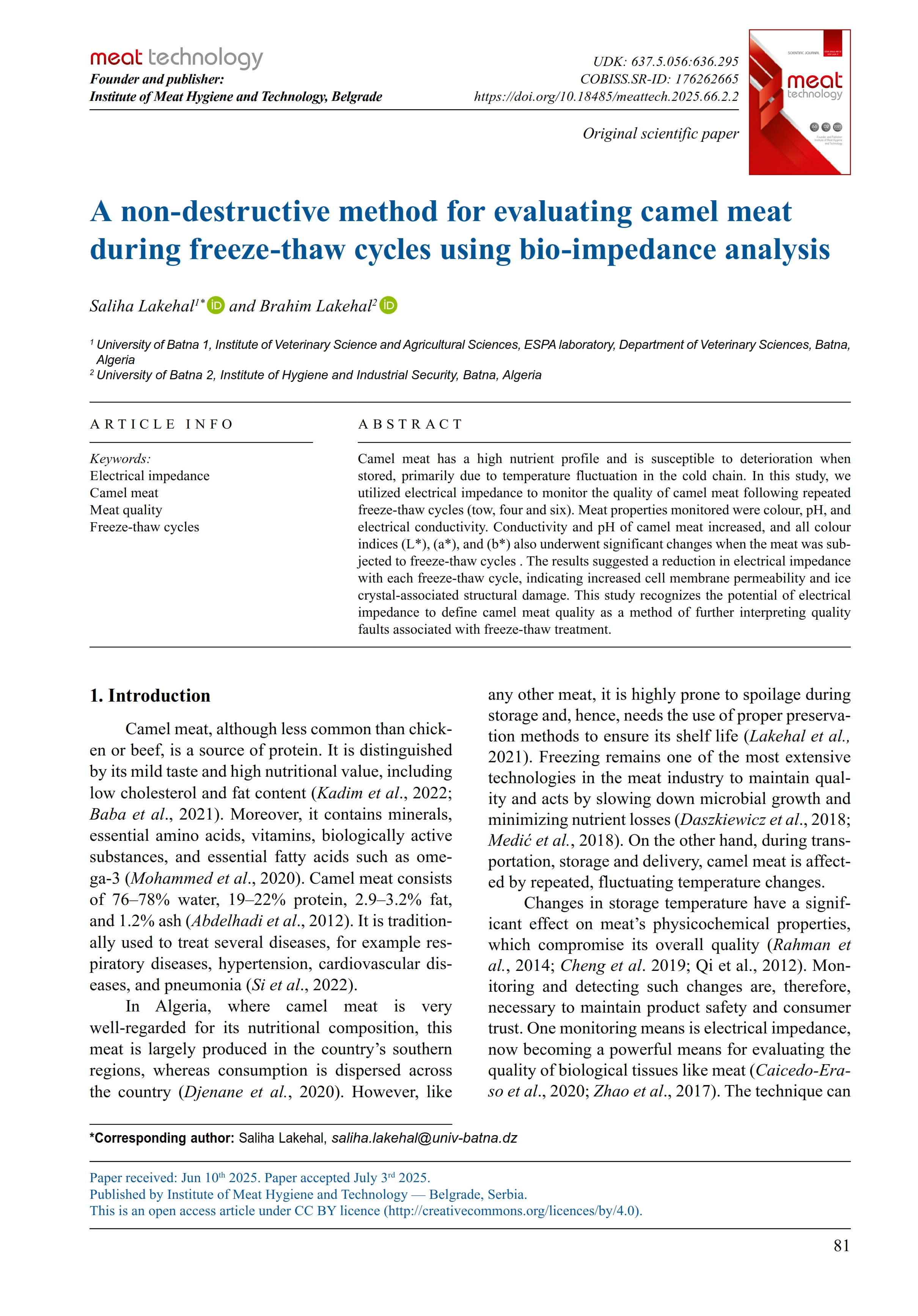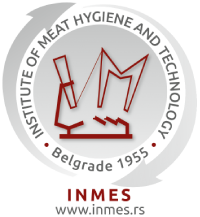A non-destructive method for evaluating camel meat during freeze-thaw cycles using bio-impedance analysis
Abstract
Camel meat has a high nutrient profile and is susceptible to deterioration when stored, primarily due to temperature fluctuation in the cold chain. In this study, we utilized electrical impedance to monitor the quality of camel meat following repeated freeze-thaw cycles (tow, four and six). Meat properties monitored were colour, pH, and electrical conductivity. Conductivity and pH of camel meat increased, and all colour indices (L*), (a*), and (b*) also . The results suggested a reduction in electrical impedance with each freeze-thaw cycle, indicating increased cell membrane permeability and ice crystal-associated structural damage. This study recognizes the potential of electrical impedance to define camel meat quality as a method of further interpreting quality faults associated with freeze-thaw treatment.





